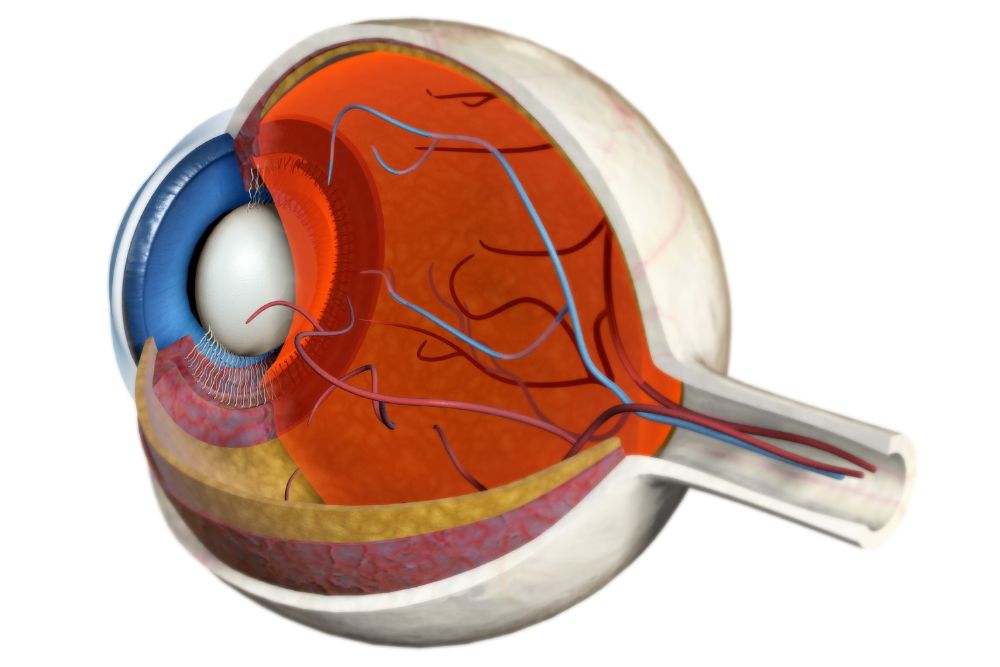Quiz: How Much Do You Know About the Retina?

Originally published by Retina Group of Florida.
Did You Know?: When your eyes’ lenses focus an image on your retina, it’s presented as backward and upside down. Your brain then reorients and corrects the image for you.
The retina is one of the eye’s most essential components. How much do you really know about it, though? Here’s a brief quiz to test your retinal recall.
1. What Is the Retina's Main Responsibility?
A. Controlling the amount of light entering the eye.
B. Converting light signals into electrical signals, allowing you to see.
C. Helping your eyes focus on objects.
D. Maintaining your eyeball’s shape and protecting it from injury.
(See Answer Below)
2. True or False: The Macula Enables Side Vision
(See Answer Below)
3. True of False: The Retina Is Part of The Nervous System
(See Answer Below)
4. What Is the Main Cause of Adult Vision Loss?
A. Glaucoma
B. Retinal Detachment
C. Age-Related Macular Degeneration (AMD)
D. Uveitis
(See Answer Below)
5. True or False: Diabetes Can Harm the Retina
(See Answer Below)
6. True or False: Retinal Problems Have No Warning Signs
(See Answer Below)
Answer 1
The answer is “B.” As light enters through the eye’s lens, it’s focused and sent to the retina. When it hits the retina, it’s converted to an electrical signal and then sent via the optic nerve to your brain. The brain processes the signal into a picture your brain understands, allowing you to see images.
Answer 2
False. The peripheral retina, one of the retina’s two main parts, handles your side vision, which is what you see out of the corner of your eye. The macula, the retina’s center, is actually responsible for your central vision, which is what you see when your eyes are pointed straight ahead. Specifically, the fovea, the macula’s center, allows you to see fine, detailed images, and perform close-up activities, like cooking and seeing faces.
Answer 3
True. Despite their location in the back of the eye, your retina is considered part of the central nervous system. Specifically, six nerves, including your optic nerve, work together to control and maintain your eye’s vision, movements, and reflexes.
Answer 4
The answer is “C.” According to the Centers for Disease Control (CDC), among Americans, 65 years and older, age-related macular degeneration is the leading cause of permanent vision loss. Overall, nearly 2 million Americans 40 years and older are impacted by this incurable, degenerative disease, which targets the macula, leading to central vision loss. By 2050, this number’s expected to increase to 5.4 million.
Answer 5
True. Having any type of diabetes can boost your risk of developing diabetic retinopathy. The most common cause of vision loss among adults with diabetes, it affects more than half of all patients. Diabetic retinopathy involves high levels of blood sugar causing damage to the retina’s blood vessels. New blood vessels are grown to compensate, but they may not work well, causing retinal leaking or bleeding. You could also develop diabetic macular edema (DME), in which fluid or blood accumulates in the macula, causing swelling and central vision problems.
Answer 6
False. While all patients are different, there are certain signals that may indicate retinal concerns. Should you notice any of the following symptoms, you need to alert your ophthalmologist:
- Blurry or distorted vision
- Loss of peripheral vision
- Light sensitivity
- Vision getting noticeably worse
- Double vision (diplopia), typically a temporary issue, involves seeing two images of a single object when you’re looking at it.